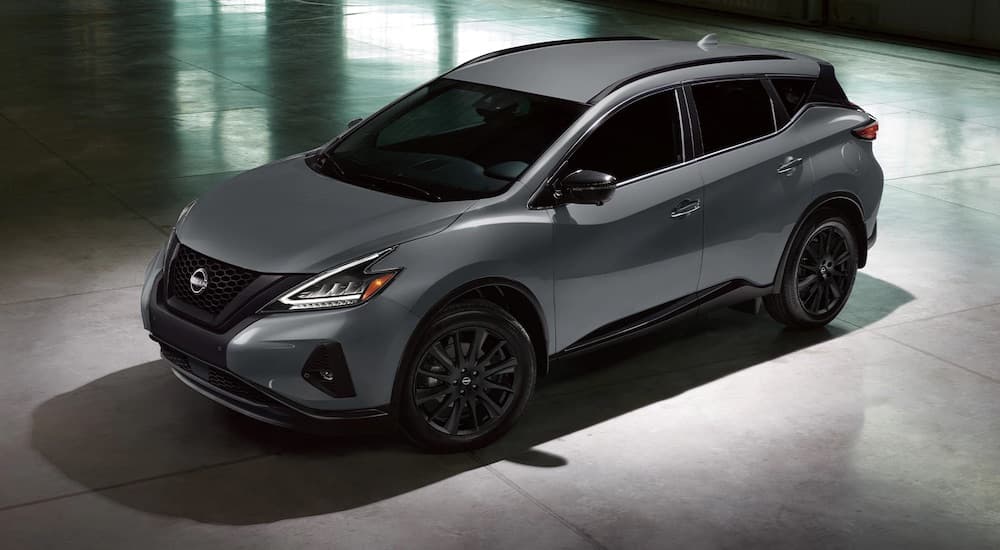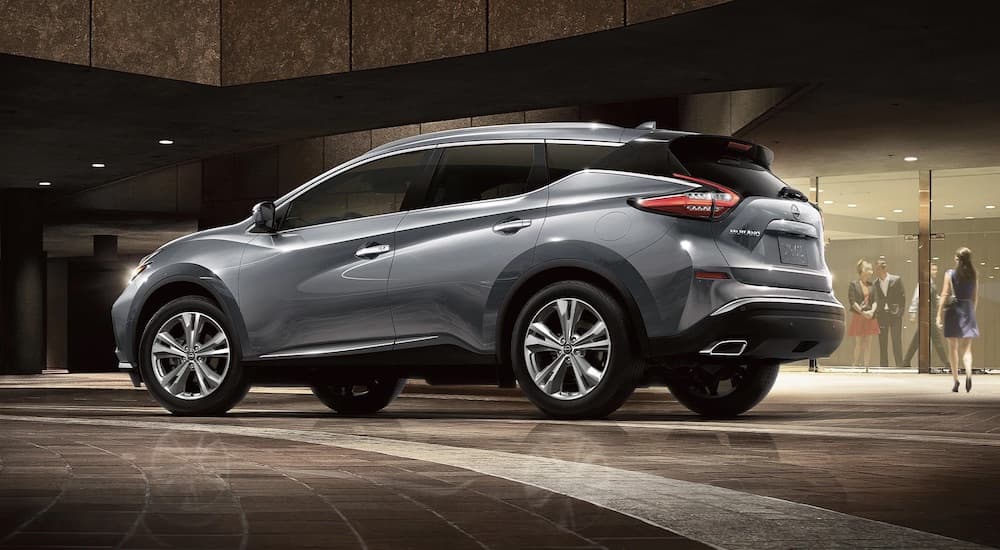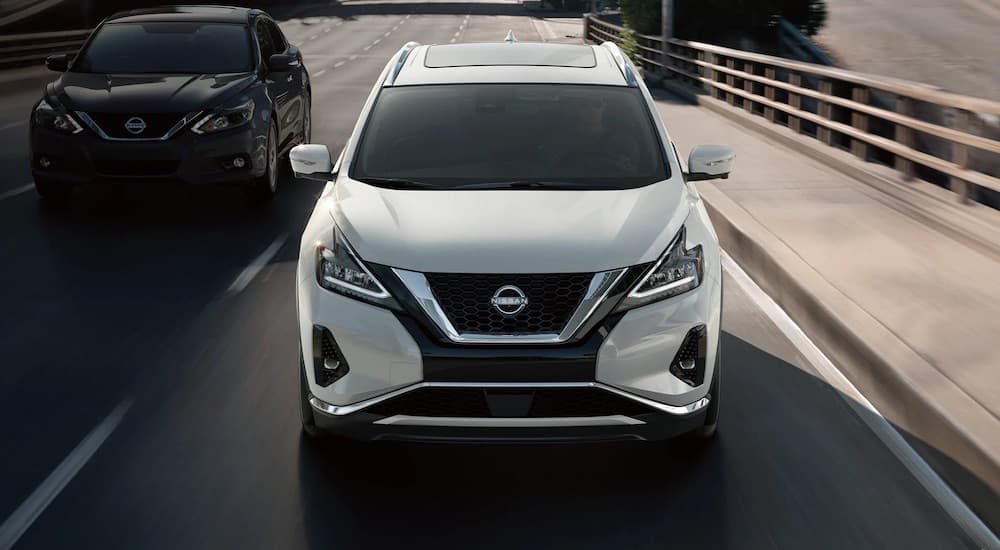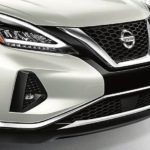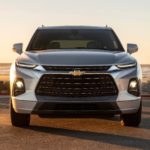As legends go, Nissan is no slouch. The Japanese automaker’s appetite for risk surpasses most other import brands, and though it may seem reckless to outsiders, these risks have positioned Nissan as a formidable opponent. Innovation can always be traced to a singular inflection point, and for Nissan’s SUV strategy, that key moment was introducing the midsize Murano in the United States.
Now in its third generation, the 2023 Nissan Murano represents the best of Nissan’s SUV game, with an American-based design team taking the lead to produce arguably the most complete crossover in the category. The Murano was Nissan’s first-ever crossover in America, and it remains a top seller.
Many American buyers aren’t aware of the depth of thought and care that goes into designing a new vehicle, especially among Japanese automakers like Nissan. The Murano’s current design is based on a concept car dubbed the “Resonance,” which was unveiled at the 2013 Detroit Auto Show. After receiving rave reviews for its sleek architecture and modern, edgy contours, Nissan decided to push the concept car into production.
The First-Generation Murano: Affordable Luxury
When a carmaker green lights a brand new model, it’s usually for a good reason. First, research suggests that demand is present that is not currently met. Next, the new model must fill a void in the existing lineup without stealing sales from established models. Finally, the Murano had a third hurdle: don’t encroach on Nissan’s Infiniti luxury lineup, which was developing its own crossover model.
With a goal of upscale premium design and affordability, Nissan designers set out to create a modern crossover with signature Nissan styling. This was new territory for the company since all of its previous SUV models (including the Pathfinder, Xterra, and Armada) had been built on truck platforms. The company decided to go with a midsize model based on the well-regarded FF-L platform that had been developed for the Altima and Maxima.
While many early crossovers did their best to emulate the traditional boxy SUV aesthetic, the Murano was a radical departure from convention. It features a fluid design with flowing lines and a low-sloped windshield. Designers chose aerodynamic styling inspired by the wind. The Murano’s stretched headlights and taillights shared more in common with the Nissan 350Z sports car than the Titan or Frontier. However, the design pays homage to the practical aspects of an SUV, offering a roomy interior with space for five passengers and a respectable amount of cargo.
The Nissan Murano debuted as a 2003 model featuring a powerful 3.5-liter V6 engine that produced 245 hp and was available with front-wheel drive or all-wheel drive. In a mid-cycle refresh for 2006, Nissan added LED lighting, an infotainment screen, and a backup camera. Despite its roots in Nissan’s sedan lineup, the 2003 Murano broke ground when it was nominated for the North American Truck of the Year award.
Generation Two: Quality and Evolving Technology
Nissan debuted the second-generation Murano in Los Angeles as a 2009 model. It was clear that Nissan was moving to a more practical and convenience-oriented design, with affordability at the forefront of its trim logic. Offered in a variety of trims, the 2009 Murano offered a high-value crossover with the same exacting quality standards found on more expensive Nissan models.
Though this newest Murano was priced affordably, Nissan still offered a handful of premium features. The upscale LE trim featured leather seating, a power liftgate, touchscreen navigation, and a handful of upscale accents. The overall exterior design favored the same sculpted, fluid aesthetic but with a more aggressive front end that aligned with the style of Nissan’s growing crossover lineup.
Oddly, Nissan released a convertible Murano model called the Murano CrossCabriolet in 2011, which was sold until the end of the second generation. According to Nissan, the CrossCabriolet was the “world’s first and only all-wheel drive crossover convertible.” It featured a fold-away soft top that tucked behind the rear seats without occupying the cargo area. Nissan touted its roomy back seat and powerful V6 engine, but despite the aggressive marketing campaign, the Murano CrossCabriolet failed to draw buyers.
The tech-heavy second-generation Murano included available push-button start, keyless entry, and automatic headlights. Also featured on later models was a blind-spot warning system, which was a precursor to the semi-autonomous driver-assist technology Nissan would add in the Murano’s third generation. Other than the offshoot two-door CrossCabriolet, the Murano’s second generation was defined by practical refinements and exterior design tweaks.
Third Time’s the Charm: Optimal Design
After receiving less favorable crash test ratings for the second-generation Murano, Nissan focused on infusing the third generation with more robust safety features. That decision paid off when the Insurance Institute for Highway Safety bestowed its highest rating––the Top Safety Pick+ designation––on the redesigned 2015 Murano. In the cabin, Nissan added its Zero Gravity seats, which provide added occupant comfort and are proven to combat driver fatigue. Fuel economy was another design focus. Nissan tightened up the Murano’s aerodynamics and looked for ways to reduce overall curb weight.
Nissan’s focus on cabin ergonomics can be seen in every aspect of the vehicle, down to its “communication alley” that encourages conversation between the first and second rows. Luxurious cabin features like an upgraded Bose audio system, panoramic moonroof, and heated and ventilated front seats contribute to the redesigned Murano’s high-end vibe. In 2018, the addition of standard Apple CarPlay and Android Auto smartphone connectivity gave younger buyers a reason to consider the midsize SUV.
The newest 2023 Nissan Murano boasts a 23 MPG combined fuel economy rating, a 3.5-liter V6 engine with 260 hp, and 67 cu.ft. of cargo space with the rear seats folded flat. Given the Murano’s Top Safety Pick+ rating from the IIHS, it’s a good choice for commuters and young families. The midsize SUV starts at $33,660, making it one of the more affordable options in the category, especially given the long list of standard features found in the base model.
Nissan’s SUV Evolution
Nissan’s release of the Murano in the early 2000s cemented the automaker’s place in the competitive crossover market. Currently, the Nissan SUV lineup includes seven models, from the budget-friendly subcompact Kicks to the massive Armada. In between, classic nameplates like the Pathfinder and the Rogue contribute to Nissan’s robust SUV sales.
New to the lineup is the ARIYA, Nissan’s all-electric crossover that offers over 300 miles of driving range and a powerful electric motor capable of traveling from zero to sixty in under five seconds. With such a diverse array of SUVs, where does that leave the one that started it all? According to industry insiders, the Murano will receive a much-needed redesign in 2024 that will reportedly include a hybrid powertrain and potentially follow the ARIYA’s futuristic design cues.
News surrounding the upcoming Murano is still conjecture since Nissan hasn’t officially released a plan for the 2024 model. Ideally, Nissan will focus on powertrains and add options that increase horsepower and lead to more responsive handling. Given the Murano’s upscale interior and dramatic exterior, performance seems to be the only missing link. Should the newest Murano tackle its perceived shortcomings, it could portend bad news for the competition.
